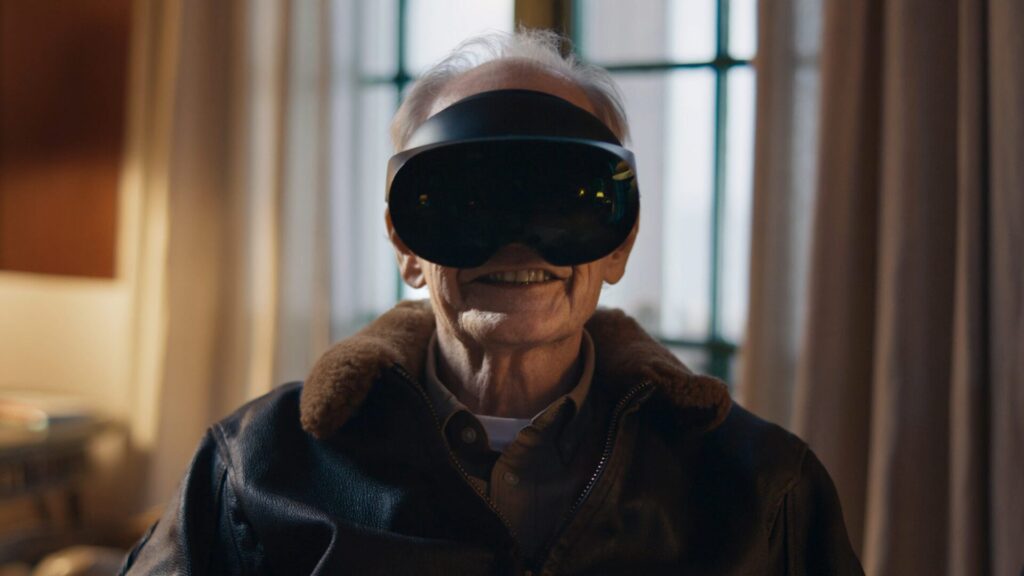
At cloud-based creative and technology studio Preymaker, invention and ideation are celebrated. From its inception, co-founders Angus Kneale, Melanie Wickham, and Verity Grantham have built the company around the notion that emerging technology can be a powerful driver of creativity. With staff in New York, Los Angeles, London, and Cape Town, the 65-person strong outfit specializes in short form projects and can work across time zones for rapid turnaround delivery, a capability particularly appreciated by its high-profile clients in advertising.
“From the beginning, the fundamentals of Preymaker have been about combining the latest technology, the finest creativity and the most talented people. Those are the pillars we base the entire business on, and Autodesk tools are key to achieving that,” shared Kneale, Preymaker Chief Creative Officer. “We knew that we wanted to use Flow Production Tracking [formerly ShotGrid] to centralize how we manage projects from the start. We also heavily use Maya and Flame for VFX, both cornerstones for our VFX work and for the industry. For all of our rendering we use Arnold, one of the best renderers out there and never lets us down. It’s a phenomenal tool that touches nearly all our projects.”

A nimble collaborator, Preymaker provides CG content, visual effects, animation, creative technology, digital humans, design, and color grading for commercials, games, virtual productions, and other short form creative deliverables. The studio recently created photoreal jets and provided end-to-end VFX and Color for “The Aviators,” a touching short film directed by Oscar winner Kathryn Bigelow for Xfinity. The studio also develops its own IP, including real-time animated short “Blue,” and the upcoming feature film “DENMARK,” a heist thriller that takes place in a Lego-inspired virtual world.
From a workflow perspective, Preymaker is entirely virtualized on Amazon Web Services (AWS) and relies heavily on Autodesk tools, including Flow Production Tracking, Maya, Flame, and Arnold. Kneale got his start in the media and entertainment (M&E) industry as an animator working in Maya before discovering Flame, so as these tools became production-ready in the cloud, he saw an opportunity for innovation and differentiation for his Preymaker Creative team.

Rising above obstacles
While Preymaker continues to break boundaries today, it encountered unexpected turbulence at launch, opening in March 2020 just two weeks ahead of the extended global shutdown. However, once brands needed to move commercial projects back into production, they found cloud-based Preymaker ideally suited for the remote-first new norm. The studio’s artists have the same experience whether they’re working on-site or remote via virtualized infrastructure, and Preymaker’s Technology team can focus on value adds like building custom in-house tools as opposed to maintaining and updating workstations.
“Clients were thrilled we were open for business because a lot of studios were stuck,” reflected Kneale. “Now, they appreciate our setup even more, because we effectively have the ability to work on projects 24 hours across time zones and deliver end-to-end services on super tight deadlines.”
He admits that honing the right workflow wasn’t easy and required a lot of trial and error, though his tech team was up for the challenge. “When we were getting started, using the cloud was pretty novel and there were not many experts, so we iterated through many different technologies before we landed on our current model. It can be tough to figure out how to piece together all the tools since there are a lot of options and it’s not a one size fits all,” Kneale explained.

Efficient communication and tracking are also paramount to Preymaker, especially when it comes to assigning work, providing feedback, and collaborating across geographies. Artists work from various locations and with Flow Production Tracking, the studio is able to centralize information and artists can work together on shared projects. The OpenUSD open interchange format also enables the studio to move assets between creative applications without having to incur significant technical debt.
“Preymaker is designed around a global workforce so we needed something like Flow Production Tracking that was battle-tested to use as the core of our communications. We’re set up so that all our artists can collaborate on all projects as one seamless team,” Kneale explained. “We’re also using OpenUSD to move files from one package to another. In the past we spent so many years writing custom converters, and the OpenUSD framework is a real accelerator for us.”
Innovation drivers
Preymaker’s Technology team is always exploring new approaches to solving creative challenges. That included replicating the on-premises Flame experience in the cloud. They worked closely with the Flame development team, and even used alpha software builds on real projects to gather data points and further advance development.
“Having a personal relationship with the people that make the software and code we’re using is important to us, and we’ve always had a good relationship with Autodesk. Our teams share a genuine passion for creating great software for artists,” said Kneale. “I used Flame and Maya for a long time and now with the team at Preymaker using it, it’s exciting to see how it’s evolved. While Flame artists used to work on projects by themselves before handing over their work, they now can collaborate together in the same frame store, and that’s mind-blowing.”


Preymaker artists also use many of the machine learning (ML) and artificial intelligence (AI) powered tools in Flame daily, including Timewarp ML and advanced camera tracking. Timewarp ML delivers more smooth and artifact-free results and automated camera tracking functions help identify moving objects within a scene.
Kneale emphasized, “AI is a huge disruptor across industries and can be a great tool. The confluence of cloud and AI is a real driver for innovation. Combined, they’re extremely powerful. They can help artists work in broad strokes and move really quickly, before moving into production and taking the time to build controllable assets.”
Building for the future
In Kneale’s view, change is both good and inevitable when it comes to technology development, investing in talent, and running a creative studio. His goal is to evolve a strong foundation while embracing new technology with tools that offer control and can scale. Part of that foundation is keeping up with the rapid pace of progress, and understanding how to leverage the power of AI.
In general, the studio keeps an eye on the latest AI developments and adopts new tools that prove useful. Preymaker’s Technology team uses GitHub Copilot and ChatGPT for coding guidance, moving up the starting point for in-house custom tool development. The studio also uses a wide range of generative AI tools like Stable Diffusion for multi-modal image generation and Midjourney to ideate on creative direction and build mood boards in the pre-production stage of a project.
“AI is a powerful tool when used in the right way. There is no one single AI platform that is going to obliterate everything else or replace great artists and storytellers,” said Kneale. “Using AI out of the box to produce work that is just ‘good enough’ erodes filmmaking and storytelling, but using AI to enable better storytelling and more high-quality visual content is empowering.”
Along with advancing the latest technologies in pursuit of efficiency, Preymaker is also committed to investing in creative talent. With the studio’s September 2024 expansion into South Africa, it’s providing a three-year scholarship for a local student to study animation and VFX at The Animation School in Cape Town.
Tools that stand the test of time
As Preymaker’s project work evolves, so does its approach. New workflows are adopted to accommodate a break from linear narratives to engage audiences in new ways. For example, advertising agency McCann Erickson tapped Preymaker to build a VR maze to introduce a new product offering from financial institution State Street. It was built out of six wall sections that enabled the creation of any right-angled maze. While the game ran in Epic Games’ Unreal Engine at 125 frames per second on a Vive headset, Maya played a key role in its development. All UV’ing of the geometry was done in Maya to ensure light maps would be accurate once baked. This modular approach made it significantly easier to assemble the maze within Unreal Engine. In some cases, specific mazes were designed directly in Unreal, while others were fully mapped out in Maya and then imported as proof-of-concept models. These models were scaled to real-world dimensions, allowing Preymaker to navigate the environment in virtual reality (VR) and evaluate the set’s layout and design.
After many years of experience in visual effects, and leaning into every innovation from cloud and virtual production, to real-time engines and AI, Preymaker continues to build its pipeline around Maya, Flame, Flow Production Tracking and Arnold to deliver the visual magic that makes it one of the most reputable creative studios in the business.
Join upcoming webinars with Preymaker
To hear from Preymaker’s Chief Creative Officer, Angus Kneale, and ask him your questions, register for the upcoming webinar “Preymaker’s Technology Blueprint for a Future-Ready Studio” on January 21, 2025 at 8AM ET and January 22, 2025 at 2PM ET.
Learn more about how Autodesk’s VFX solutions can help you serve up new levels of efficiency and creativity.